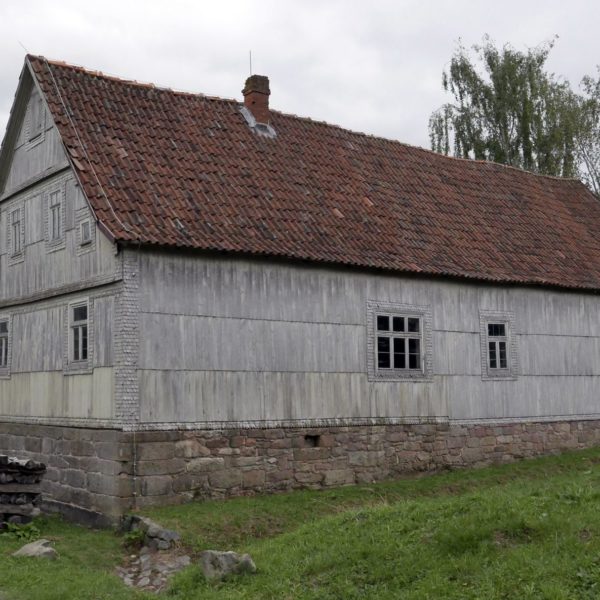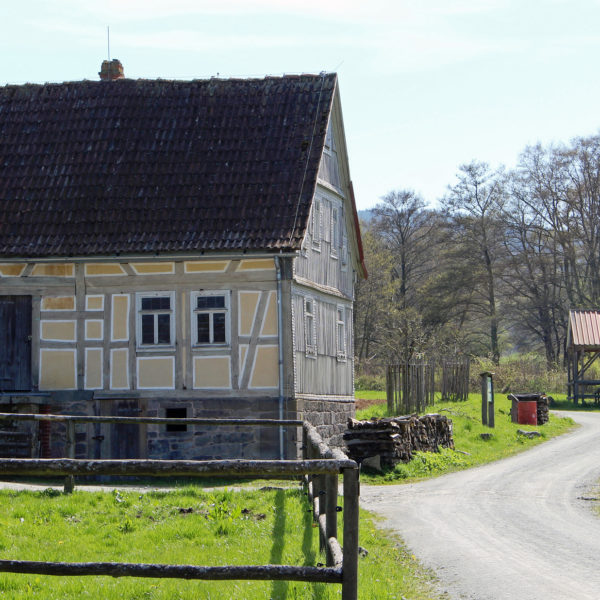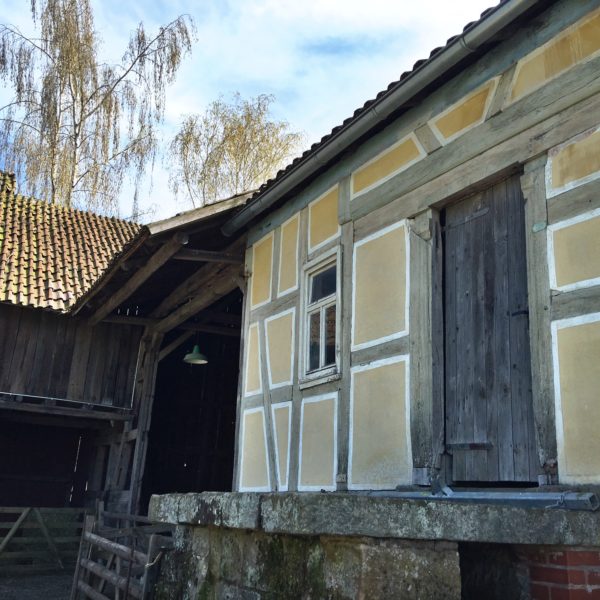Farmstead from Mittelkalbach

Built: 1766
Dismantled: 1986
Reassembled: 1986
This small farm from the Rhön region was extended a number of times since the beginning of its construction in the 18th century. Numerous alterations and extensions from the 19th century serve as an excellent documentation of how closely the physical structure of the building, the farming enterprise and the life of its inhabitants depended on the economic conditions of the particular times.
The first building, a byre dwelling built in 1766, can still be discerned in the right-hand side building that combines living quarters, barn and stable under a shared roof. The stable is situated underneath the living quarters. Its former owner, Johann Josef Kaib, is listed in documents as a Hüttner, a farmer with a smallholding, or small-holder. Nevertheless, Hüttners had equal standing in their communal rights and duties. Besides managing his farm, Kaib held the offices of mayor and arbiter for three decades. The heatable parlour, therefore, served as the mayor’s office between about 1850 and 1900.
In 1901, Kaib’s daughter Helena and her husband Willibald Leinweber took over the farm and its arable land spanning about eleven acres. Shortly afterwards, they built an addition at a right angle to the main house, a stable for five cattle and a connecting drive-in barn with a threshing floor. The stable walls are built with massive quarry stones due to the high levels of humidity resulting from the animals. Facing the farmyard, the masonry was faced with brickwork. This kind of building extension documents the increasing concentration on livestock farming. The introduction of stable feeding from about 1850 onwards yielded better crop harvests and the use of artificial fertilizers also began to gain importance from 1910 on.
In the museum, the farm is reconstructed as it would have looked around 1900/1910 and it documents the farming and social conditions of the Rhön region over a timespan of 150 years. Due to the wealth of research and well-documented history of the house, the farmstead and the family, the complex is being developed into a hands-on farm experience. Museum education projects will provide immersive and accessible insights into historical farm work, housekeeping and aspects of social history.




Mit dem Laden der Karte akzeptieren Sie die Datenschutzerklärung von Google.
Mehr erfahren




